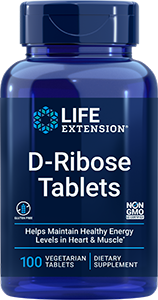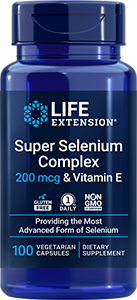 | September 11, 2009 | Folic acid supplementation improves blood flow in peripheral arterial disease | | In the September, 2009 issue of the British Journal of Surgery, researchers from England's Norfolk and Norwich University Hospital National Health Service Trust and the University of East Anglia report the benefits of supplementing with folic acid in patients with peripheral artery disease, or PAD. Peripheral artery disease is diagnosed when the arteries of the extremities become progressively occluded due to atherosclerosis. The disease is associated with a ten year reduction in life expectancy and also strongly increases the risk of dying from other, related conditions. In a double-blind trial, 133 peripheral artery disease patients were assigned to receive 400 micrograms folic acid, 400 micrograms 5-methyltetrahydrofolate (5-MTHF, an active form of folate whose metabolism is not dependent on the enzyme dihydrofolate reductase) or a placebo daily for 16 weeks. Prior to and following the treatment period, blood samples were analyzed for folate, vitamin B12, total homocysteine and other factors. Ankle: brachial artery pressure index and pulse wave velocity measured at the knee and ankle evaluated blood flow at the beginning and end of the trial. Not surprisingly, red blood cell and plasma folate increased in participants who received folic acid and 5-MTHF, and homocysteine was significantly reduced compared to those in the placebo group. Arterial: brachial artery pressure index was significantly improved in both the folic acid and 5-MTHF groups. Pulse wave velocity measured at the knee was lower in the 5-MTHF group and also tended to be reduced in the group that received folic acid, both compared with the placebo and with baseline values. (Brachial-knee and brachial-ankle pulse wave velocity reflect arterial stiffening in the central aorta and peripheral arteries.) "This study found that folate supplementation substantially reduced plasma homocysteine and produced a statistically significant but clinically modest improvement in peripheral arterial circulation compared with placebo," the authors write. "The results of this trial are consistent with other studies on the effects of homocysteine-lowering therapy, which have shown improving vascular function in patients with PAD and a progressive increase in ankle: brachial pressure index, a decreased incidence of restenosis after percutaneous transluminal coronary angioplasty and regression of carotid plaques." Due to the similarity in benefits observed in this study for 5-MTHF and folic acid, the authors conclude that the data "suggest that 5-MTHF may be a safe and effective alternative to folic acid." | |  |
| Homocysteine levels are measured directly in the blood. An acceptable level of homocysteine depends partly on your age and gender. It is clear, however, that our homocysteine level rises as we age and that (above a certain level) homocysteine is dangerous. Conventional medicine classifies homocysteine levels as follows: - Normal—5 to 15 µmol/L
- Moderate—16 to 30 µmol/L
- Intermediate—31 to 100 µmol/L
- Severe—Above 100 µmol/L
However, because of the evidence linking homocysteine to heart disease (even at relatively low levels), the Life Extension Foundation recommends that people try to keep their homocysteine level between 7 µmol/L and 8 µmol/L. Management of hyperhomocysteinemia begins with folic acid, vitamin B6, and vitamin B12. To varying degrees, folic acid and vitamin B12 increase the remethylation of homocysteine back into SAMe. Vitamin B6 is necessary for the conversion of homocysteine into glutathione along the transsulfuration pathway. The following studies have shown a rapid and dramatic decrease in homocysteine levels caused by folic acid and some B vitamins: - In 1996, the Food and Drug Administration (FDA) mandated that cereal-grain flour products be fortified with folic acid. Modest but significant decreases in homocysteine levels followed (Jacques PF et al 1999; Anderson JL et al 2004).
- One set of patients with a history of myocardial infarction or unstable angina was given 2000 mcg of folic acid daily. Another group of patients with the same conditions received only 200 mcg. The higher dosage significantly reduced total homocysteine levels (Neal B et al 2002).
- Daily supplementation with 350 mcg of folic acid for 17 weeks reduced serum homocysteine levels by nearly 20 percent, enough to reduce the risk of vascular disease (Venn BJ et al 2002).
- Folic acid and vitamins B6 and B12 reduced homocysteine levels, restored endothelial function, and reduced arterial plaque (Spence JD et al 2001).
|
|  |
  | | The primary source of energy for all cellular processes is a molecule known as ATP (adenosine triphosphate). Healthy, active cells constantly replenish their supply of ATP to produce vital cellular energy. However, under conditions of stress, injury, or aging, critical body tissues such as heart and skeletal muscles cannot produce ATP quickly enough to perform optimally. D-ribose, a carbohydrate molecule found in every living organism, facilitates the production of ATP. In studies of healthy athletes as well as those who have suffered injury to the heart muscle, supplying fatigued muscle cells with D-ribose quickly restored ATP levels to normal. | | |   | | As an essential co-factor of glutathione peroxidase, selenium is an important antioxidant. Selenium is incorporated into proteins to make selenoproteins, which are important antioxidant enzymes. The antioxidant properties of selenoproteins help prevent cellular damage from free radicals. Other selenoproteins help regulate thyroid function and play a role in the immune system, DNA repair, and the detoxification of heavy metals. For best results, take with meals. This product provides the most advanced forms of selenium on the market. Vitamin E has been added because it works synergistically with selenium. | | | |  | | Life Extension Update | | What's Hot | | Life Extension magazine | |

